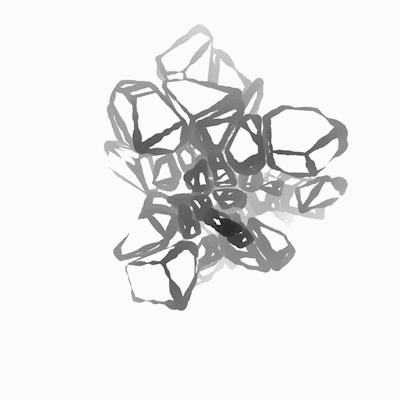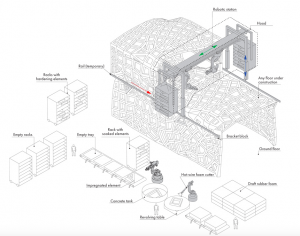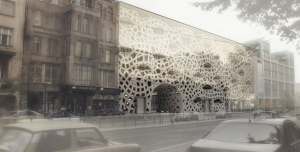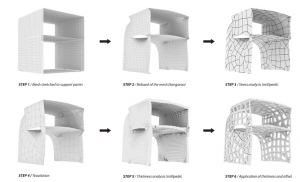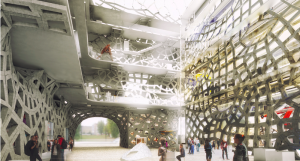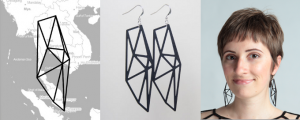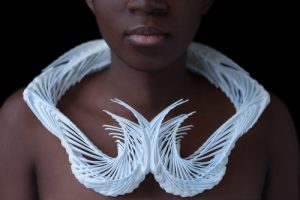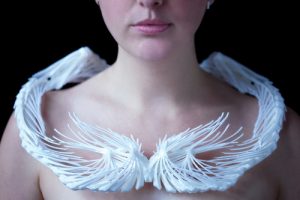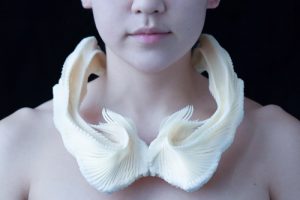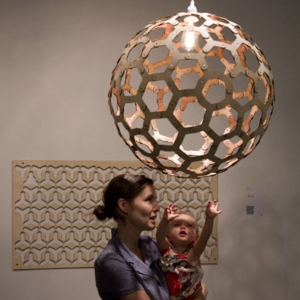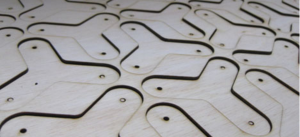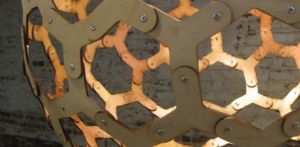This artpieces just blew my mind when I first saw it. They are sculptures that are created by Anthony Howe. I was really surprised that these sculptures are moving by kinetic wind, and the movement is so lively that I could not believe that these are made by stainless steel. They weigh up to 1,600lbs, and because they are too heavy and huge, he had to test them if they actually work by computer program.(CAD) He tried to express the vivid movement as lively as possible, and for some of his works, he wanted to express natural movements without any electronic features.
Howe tested his sculptures by driving down the freeway. He wanted his sculptures to be strong enough to tolerate wind.
He did not explain how each pieces of sculpture is designed and built, however each pieces have their own curved shape in order to show vivid movement when it is attached all together.
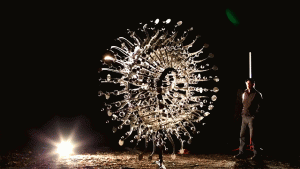
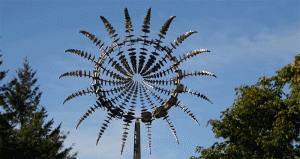
Di-Octo. All stainless steel kinetic wind sculpture. Silent operation. 25’6″h x 10’w x 4’6″”d (7.8m h x 3m w x 1.4m d) 1,600lbs (725kg)
In Cloud III. 7.6 meter tall all stainless kinetic wind powered sculpture. Engineered for extreme high winds yet spins in 2mph. (25′ h x 10’w x 5’d, 1,500lbs), shown here not on pedestal.
This is a video that shows an actual movement of a sculpture.
![[OLD – FALL 2016] 15-104 • COMPUTING for CREATIVE PRACTICE](../../../../wp-content/uploads/2020/08/stop-banner.png)


